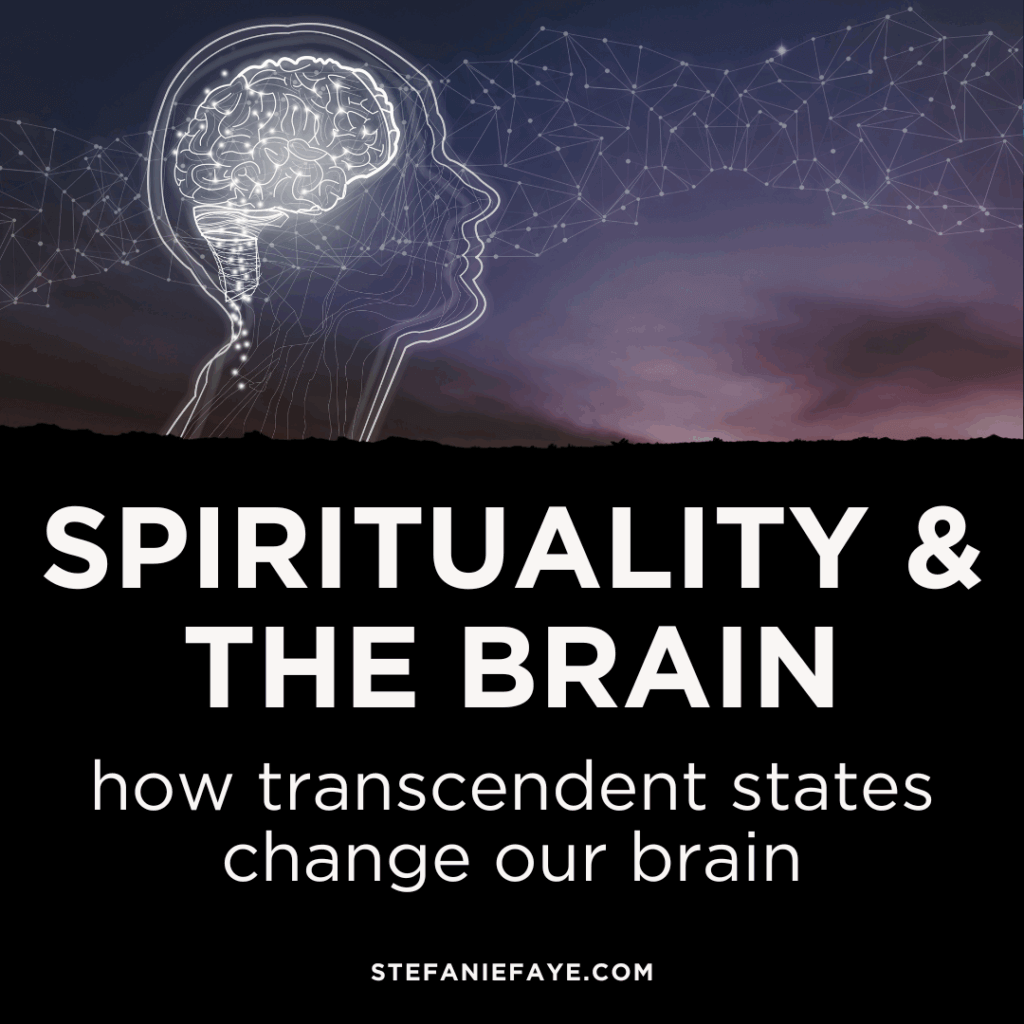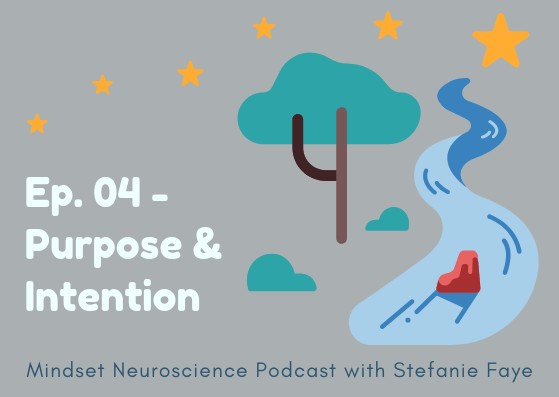A neuro-spiritual home
In a study published in Cerebral Cortex, neuroscientist Lisa Miller and a team of researchers explain how they generated “personally relevant” spiritual experiences in a diverse group of subjects and scanned their brains while these experiences were happening.
The results indicate that there is a “neurobiological home” for spirituality.
When we feel a sense of connection with something greater than the self—whether transcendence involves communion with God, nature, or humanity—a certain part of the brain appears to activate.

It might be more universal than cultural
The study suggests that there is universal, cognitive basis for spirituality, as opposed to a cultural grounding for such states. This new discovery, researchers say, could help improve mental health treatment down the line.
Brain research is pointing to individual notions of spiritual experience
Previous studies have examined the brain activity of Buddhist monks or Catholic nuns, say—people who are already spiritually inclined and familiar with the practice of cultivating transcendent states. But the research from Miller and her team analyzed subjects from different backgrounds with varying degrees of religiosity, and totally different individual notions of what constitutes a spiritual experience.
Spirituality vs religiosity
“Although studies have linked specific brain measures to aspects of spirituality, none have sought to directly examine spiritual experiences, particularly when using a broader, modern definition of spirituality that may be independent of religiousness,” Miller and her team explain. Because there are many types of transcendent moments with varying degrees of meaning to different people, it’s been difficult to test the general effects of spirituality, as opposed to religiosity. So for this study, the researchers generated individual scripts that put each subject in their own relevant transcendent state. With each of the subjects, the researchers created a personal script based on each person’s self-reported previous spiritual experiences. The scientists then scanned brain activity when generating such a state in the subjects.
Parietal cortex and transcendent states
During their varied transcendent states, all subjects showed similar activity patterns in the parietal cortex, which processes sensation, spatial orientation, and language, and is thought to influence attention, among other functions. In other words, whether the thing that makes a person feel connected to something greater involves church, trees, or a stadium full of sports fans, it appears to have the same effect on the brain.
Spiritual experiences have different effects than meditation and relaxation
The effect on the brain is distinct from the effect of other forms of relaxation, according to researchers. “We observed in the spiritual condition, as compared with the neutral-relaxing condition, reduced activity in the left inferior parietal lobule (IPL), a result that suggests the IPL may contribute importantly to perceptual processing and self-other representations during spiritual experiences,” the study explains.
Barrier of self-other dissolves
In neuroimaging research that focused on groups of meditating individuals, groups who engage in religious/spiritual practices, and groups who perform both practices together, different brain activity was observed. In the mindfulness group, a relative prefrontal increase was shown - which relates to decreased anxiety and improved well-being. When spiritual belief was present, the brain showed a relative decrease in activation of the parietal cortex, specifically the inferior parietal cortex. Studies suggest that because the mindful and spiritual practices studied differ in terms of focusing on the 'self' or 'other' (higher being), the neurological components that reflect spirituality might contribute to an understanding of how 'self' and 'other' are represented in the brain, and how this may be reflected in behavior. These changes in the brain may help explain why, during spiritual experiences, the barrier between the self and others can be reduced or even eliminated altogether.
Resilience and recovery
“Spiritual experiences are robust states that may have profound impacts on people’s lives,” explains Yale psychiatry and neuroscience professor Marc Potenza, in a statement about the work. “Understanding the neural bases of spiritual experiences may help us better understand their roles in resilience and recovery from mental health and addictive disorders.”
Shifts in perception lower stress
Spiritual experiences involve “pronounced shifts in perception [that] buffer the effects of stress,” the study says. The findings suggest that those experiences can be accessed by everyone, and that transcendence isn’t dependent upon religiosity. That makes studying spiritual experiences and figuring out how to use such states for improved mental health easier for scientists. Next, the researchers hope to test a bigger group of subjects of all ages.
Analytical and spiritual thinking are both needed for emotional well-being
As Tony Jack, director of the Brain, Mind and Consciousness lab at Case Western Reserve University, analytical thinking and spiritual, empathic thinking rely on different neural pathways and processes. They don’t happen simultaneously in the brain, but both modes are necessary, like breathing in and breathing out. “You can’t do both at the same time, but you need both to stay healthy and well,” he says.
Self-Transcendent vs. Self-Oriented
These studies also point to a meta theme of self-transcendence (beyond the self) and self-orientation. This type of shifting of brain activity is becoming an important focus in various types of research, including neuro-educational research. Using our brains in ways that expand into realms beyond our limited perception of our 'self' is linked with positive indicators for learning and personal wellbeing. (we cover this in a recent podcast episode on transcendent thinking)
INTERNALIZATION/PERSONALIZATION
Reflection/Discussion:
When do you feel deeply connected to something beyond yourself? What does this experience feel like? How does it seem different than other experiences you have?
References
Barcelona, J., Fahlman, M., Churakova, Y., Canjels, R., Mallare, J., & van den Heuvel, M. I. (2020). Frontal alpha asymmetry during prayerful and resting states: An EEG study in Catholic sisters. International journal of psychophysiology : official journal of the International Organization of Psychophysiology, 155, 9–15. https://doi.org/10.1016/j.ijpsycho.2020.04.019
Barnby, J. M., Bailey, N. W., Chambers, R., & Fitzgerald, P. B. (2015). How similar are the changes in neural activity resulting from mindfulness practice in contrast to spiritual practice?. Consciousness and cognition, 36, 219–232. https://doi.org/10.1016/j.concog.2015.07.002
Davidson, R. J., & Lutz, A. (2008). Buddha's Brain: Neuroplasticity and Meditation. IEEE signal processing magazine, 25(1), 176–174. https://doi.org/10.1109/msp.2008.4431873
Faber Taylor, A., & Kuo, F. E. (2009). Children With Attention Deficits Concentrate Better After Walk in the Park. Journal of Attention Disorders, 12(5), 402-409. https://doi.org/10.1177/1087054708323000 (Original work published 2009)
Immordino-Yang, M. H., Christodoulou, J. A., & Singh, V. (2012). Rest Is Not Idleness: Implications of the Brain's Default Mode for Human Development and Education. Perspectives on psychological science : a journal of the Association for Psychological Science, 7(4), 352–364. https://doi.org/10.1177/1745691612447308
Miller, L., Balodis, I. M., McClintock, C. H., Xu, J., Lacadie, C. M., Sinha, R., & Potenza, M. N. (2019). Neural Correlates of Personalized Spiritual Experiences. Cerebral cortex (New York, N.Y. : 1991), 29(6), 2331–2338. https://doi.org/10.1093/cercor/bhy102
Park, B. J., Tsunetsugu, Y., Kasetani, T., Kagawa, T., & Miyazaki, Y. (2010). The physiological effects of Shinrin-yoku (taking in the forest atmosphere or forest bathing): evidence from field experiments in 24 forests across Japan. Environmental health and preventive medicine, 15(1), 18–26. https://doi.org/10.1007/s12199-009-0086-9
Tyrväinen, L., Ojala, A., Korpela, K., Lanki, T., Tsunetsugu, Y., & Kagawa, T. (2014). The influence of urban green environments on stress relief measures: A field experiment.JOURNAL OF ENVIRONMENTAL PSYCHOLOGY, 38, 1-9. https://doi.org/10.1016/j.jenvp.2013.12.005
https://news.yale.edu/2018/05/29/where-brain-processes-spiritual-experiences
NEW PROGRAM COMING THIS FALL!


